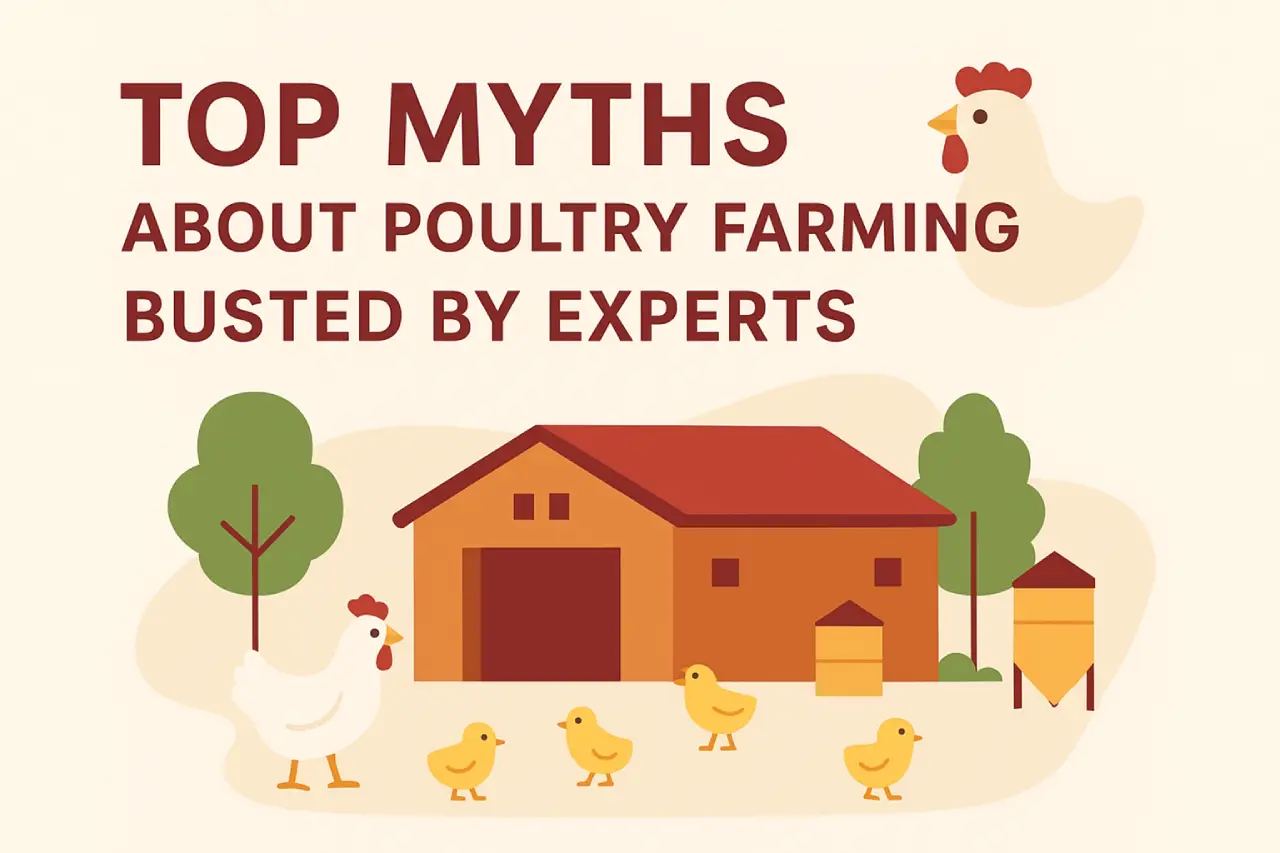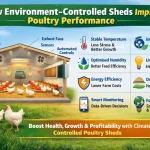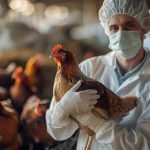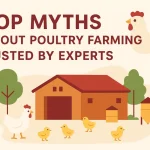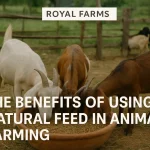Poultry farming has become one of the most profitable and fast-growing sectors in modern agriculture. It provides a consistent source of income for farmers and ensures a steady supply of eggs and poultry products to consumers worldwide. However, despite its success, many myths and misconceptions still surround this industry.
These misunderstandings often discourage new farmers from exploring poultry farming or lead to incorrect assumptions about bird health, farm management, and production methods. In this blog, we’ll clear up the confusion and bust the top myths about poultry farming, with expert insights to help you understand the real picture.
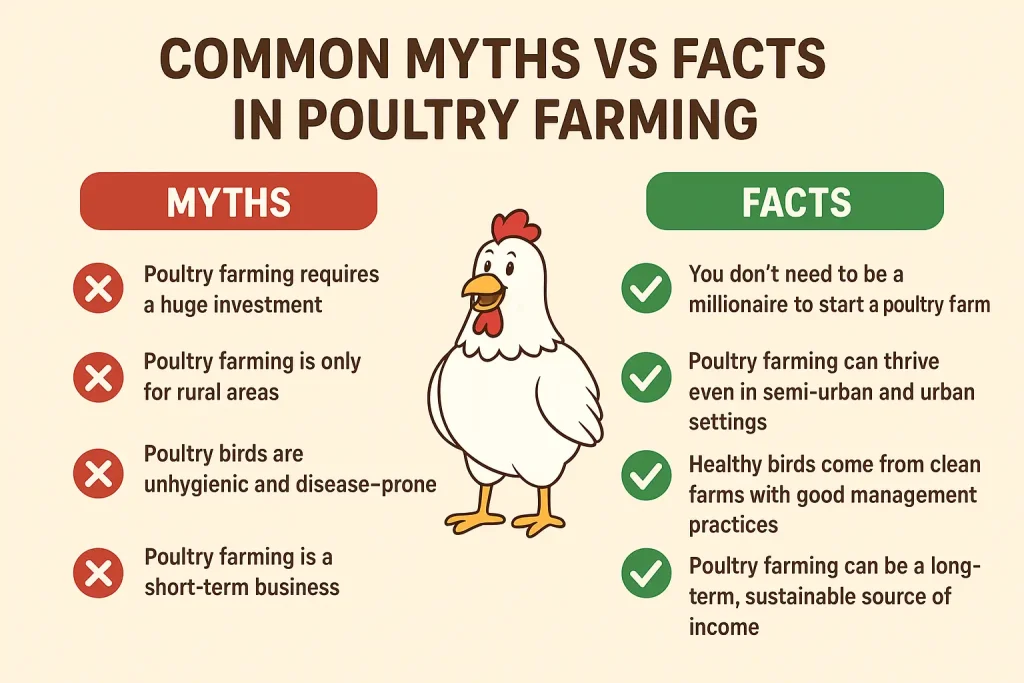
Myth 1: Poultry Farming Requires a Huge Investment
Table of Contents
ToggleFact: You don’t need to be a millionaire to start a poultry farm.
This is one of the most common myths among beginners. Many people believe that starting a poultry farm requires massive land, expensive equipment, and high-end infrastructure. In reality, poultry farming is one of the most affordable livestock businesses to start on a small or medium scale.
Farmers can begin with a modest number of birds and gradually expand as their business grows. Basic facilities like proper ventilation, clean water, adequate lighting, and simple housing can be enough for small-scale operations.
Today, many successful poultry farmers began with just 100–500 birds and reinvested their profits to scale up. The key lies in good planning, efficient management, and learning from experts — not just the initial investment.
Myth 2: Poultry Farming is Only for Rural Areas
Fact: Poultry farming can thrive even in semi-urban and urban settings.
Thanks to modern technology, poultry farming has evolved beyond traditional rural setups. In fact, many urban entrepreneurs and youth are now entering the field by setting up backyard poultry farms, rooftop coops, and commercial sheds in peri-urban areas.
What matters most is proper hygiene, biosecurity, and efficient waste management — not just the farm’s location. With temperature-controlled sheds, automated feeders, and modern management systems, poultry farming is now adaptable to almost any environment.
Myth 3: Poultry Birds are Unhygienic and Disease-Prone
Fact: Healthy birds come from clean farms with good management practices.
This misconception stems from the idea that poultry birds naturally carry diseases. However, in reality, most health issues arise due to poor sanitation or improper management — not the birds themselves.
Modern poultry farms follow strict hygiene standards, including:
- Regular cleaning and disinfection of sheds
- Clean water and balanced feed
- Vaccination and regular health checkups
- Proper waste disposal and biosecurity measures
When these protocols are followed, the birds remain healthy, active, and disease-free. Healthy poultry farming is entirely possible with the right practices and guidance from veterinarians or experts.
Myth 4: Poultry Farming is a Short-Term Business
Fact: Poultry farming can be a long-term, sustainable source of income.
Many assume that poultry farming provides short-term profits and is not sustainable in the long run. The truth is quite the opposite. Poultry farming is one of the most consistent and profitable agricultural ventures, offering multiple revenue streams — including eggs, chicks, and organic manure.
With proper management, farmers can maintain year-round production and ensure a stable income. Moreover, as demand for high-quality poultry products continues to rise globally, farmers who focus on sustainable practices can enjoy steady growth for years to come.
Myth 5: Poultry Birds Need Expensive Feed
Fact: Feed quality matters more than cost.
While it’s true that poultry feed is one of the largest expenses in farming, it doesn’t mean that farmers must always buy the most expensive brand. The goal is to provide nutritionally balanced feed — not necessarily costly feed.
Many successful poultry farmers create cost-effective feed formulas using local grains, protein sources, and mineral supplements. Additionally, innovations like feed fermentation and natural feed additives have reduced costs while maintaining productivity.
A balanced diet ensures healthy growth and high egg or chick output, regardless of the price tag on the feed.
Myth 6: Poultry Farming Harms the Environment
Fact: Sustainable poultry farming supports the environment.
With rising awareness of climate change, some critics assume that poultry farming harms the planet. However, compared to other livestock sectors, poultry farming actually has a smaller carbon footprint.
Sustainable poultry farms:
- Use poultry manure as organic fertilizer for crops
- Recycle waste through biogas production
- Adopt energy-efficient equipment
- Maintain controlled water usage
These eco-friendly practices make poultry farming one of the most environmentally responsible branches of animal agriculture today.
Myth 7: Poultry Farming is Too Complicated for Beginners
Fact: Anyone can learn poultry farming with proper guidance.
Another major misconception is that poultry farming is too technical for beginners. While it’s true that it requires discipline and knowledge, it’s not impossible to learn.
Today, training centers, government programs, and online resources make it easier than ever for newcomers to understand poultry health, housing, nutrition, and management.
By taking a short training course or consulting experts, anyone — even without prior farming experience — can start a successful poultry farm. Modern automation tools and farm management software further simplify operations.
Myth 8: Poultry Birds Grow Unnaturally Fast
Fact: Proper nutrition and care are responsible for fast growth.
Some people believe that poultry birds are given chemicals or harmful substances to make them grow quickly. In reality, poultry breeds have been scientifically improved through selective breeding and nutrition research — not artificial growth methods.
When birds receive balanced feed, fresh water, and a stress-free environment, they naturally grow at a healthy rate. Modern farming practices prioritize animal welfare, and reputable farmers strictly avoid the use of harmful growth agents.
Conclusion
Poultry farming is no longer an outdated or rural profession — it’s a modern, scientific, and rewarding business opportunity. However, misinformation often prevents potential farmers from understanding its true potential.
By separating myths from facts, we can see that poultry farming is not only affordable and sustainable but also an essential contributor to food security and rural development.
Whether you’re an aspiring farmer or simply curious about how poultry farming works, remember that success lies in knowledge, cleanliness, and consistency — not in myths. With the right training and guidance, anyone can build a thriving and sustainable poultry business.

